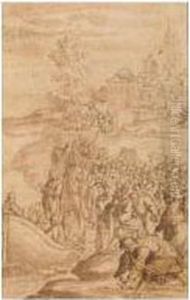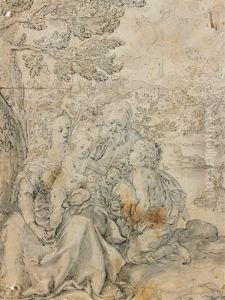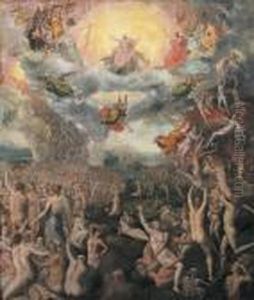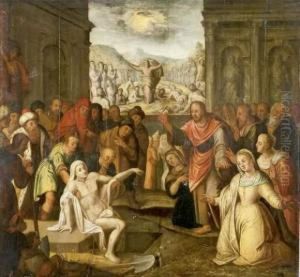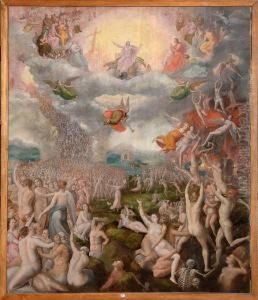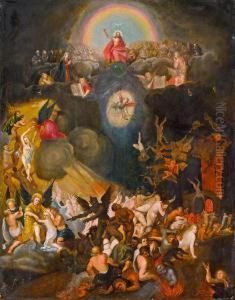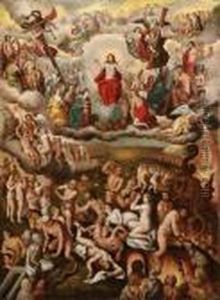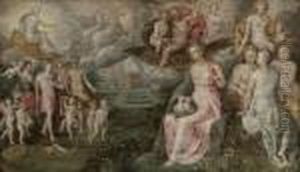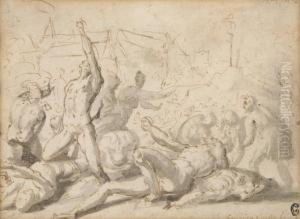Crispiaen Van Den Broeck Paintings
Crispijn van den Broeck was a Flemish painter and engraver known for his contributions to the Northern Renaissance art movement. Born in Mechelen in the Duchy of Brabant (nowadays part of Belgium) around 1523, he came from a family of artists; his father, Willem van den Broeck, and his brother, Willem the Younger, were both painters. Crispijn developed his artistic skills in this familial environment, which was common for the time as artistic professions were often passed down through generations.
Crispijn van den Broeck is primarily known for his religious works, engravings, and contributions to emblem books, which were a popular form of literature combining images and text to convey moral or philosophical ideas. While his early life and training are not well-documented, it is believed that he traveled to Italy, which was typical for Northern artists who wished to study Italian masters and the classical antiquities. His Italian experiences influenced his work, as seen in the Italianate style of his figures and his use of perspective.
Throughout his career, van den Broeck worked on various commissioned pieces for churches and other institutions. He was also involved in printmaking, a medium that allowed his works to be distributed widely and gained him recognition beyond his hometown. His engravings were notable for their intricate details and the clarity of line, which was admired by contemporaries and had an influence on the development of the graphic arts in the Low Countries.
Despite his contributions, Crispijn van den Broeck remains a relatively obscure figure, overshadowed by the likes of his more famous contemporaries such as Pieter Bruegel the Elder. His death in 1591 marked the end of a career that, while not as well-remembered as some of his peers, played a role in the rich tapestry of Renaissance art in Northern Europe. As is often the case with artists from this period, much of his work has not survived or has been attributed to others, making a comprehensive understanding of his oeuvre challenging for art historians.
